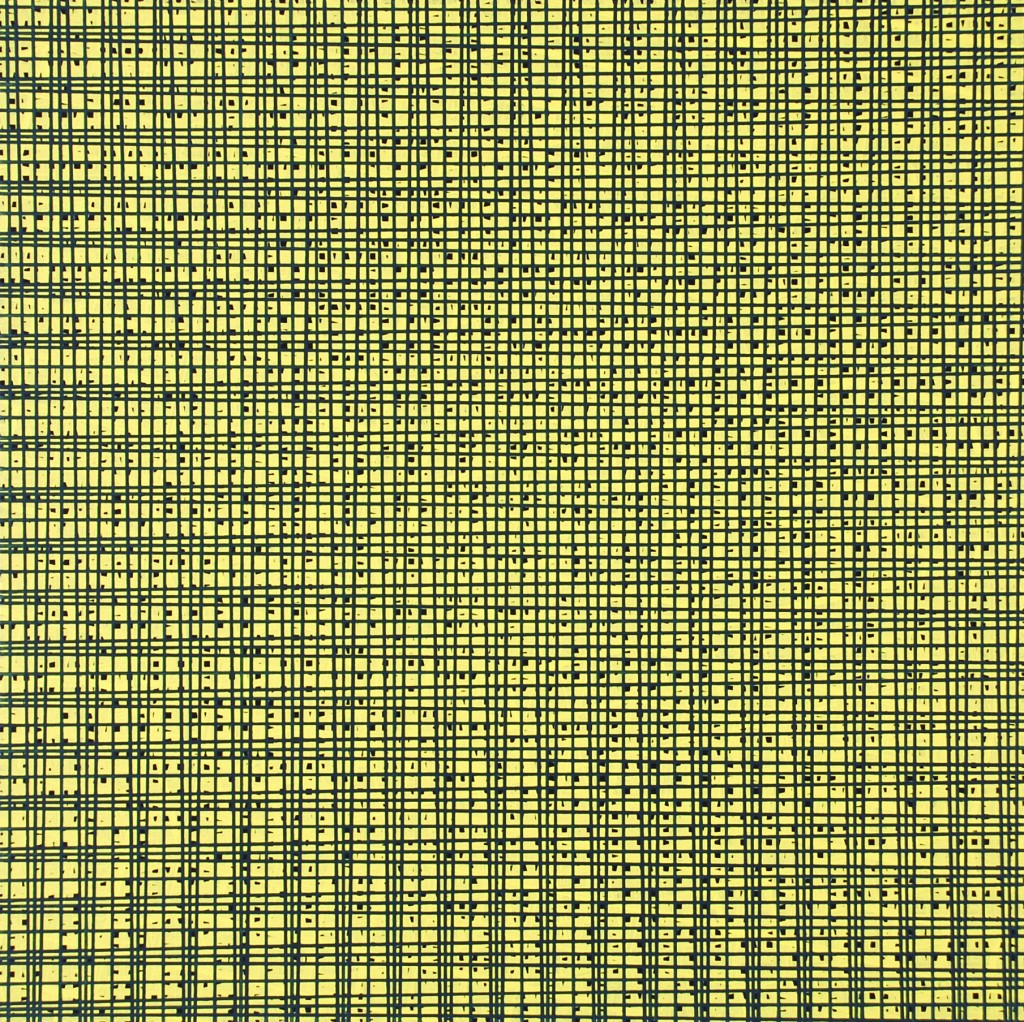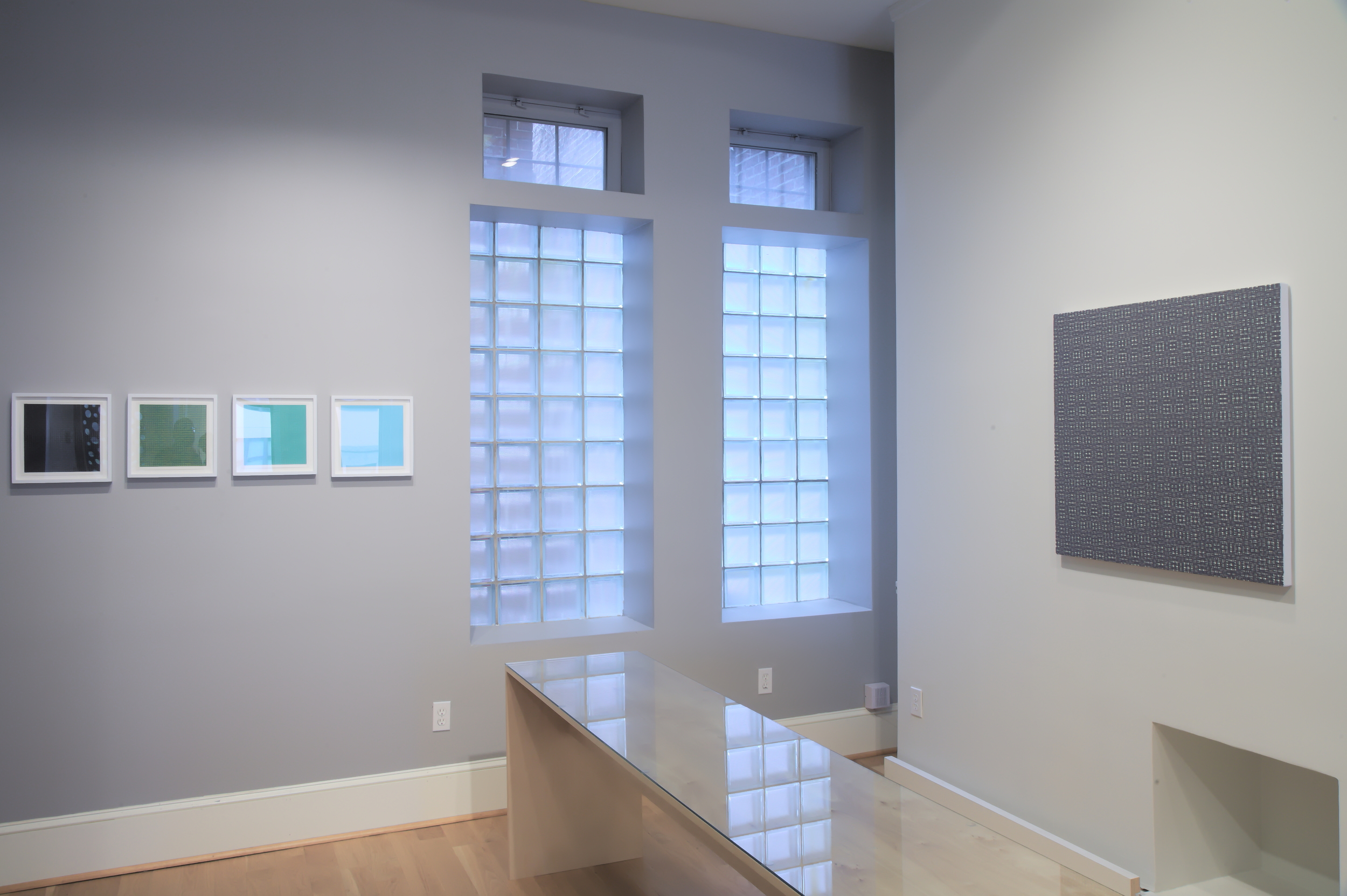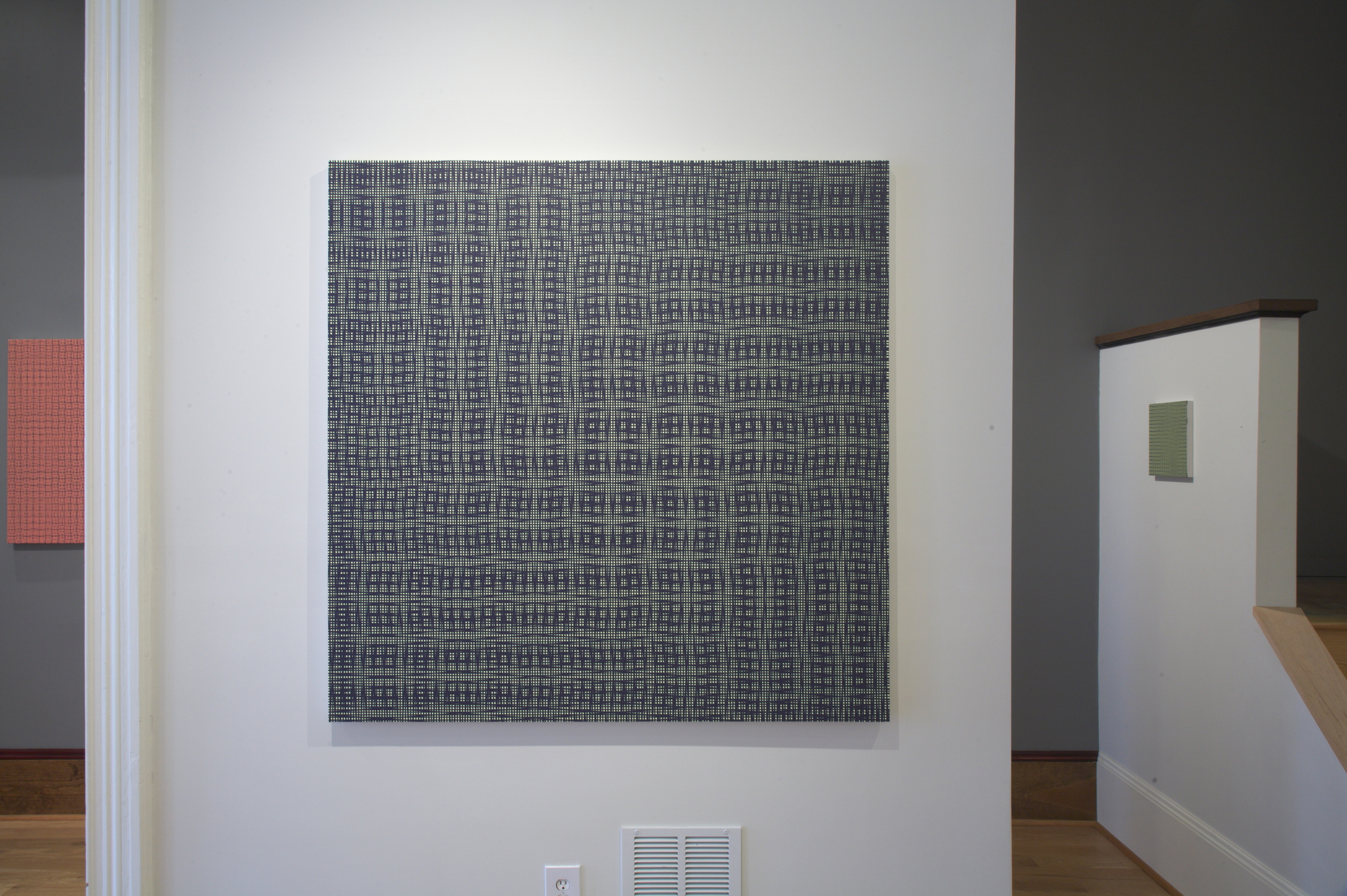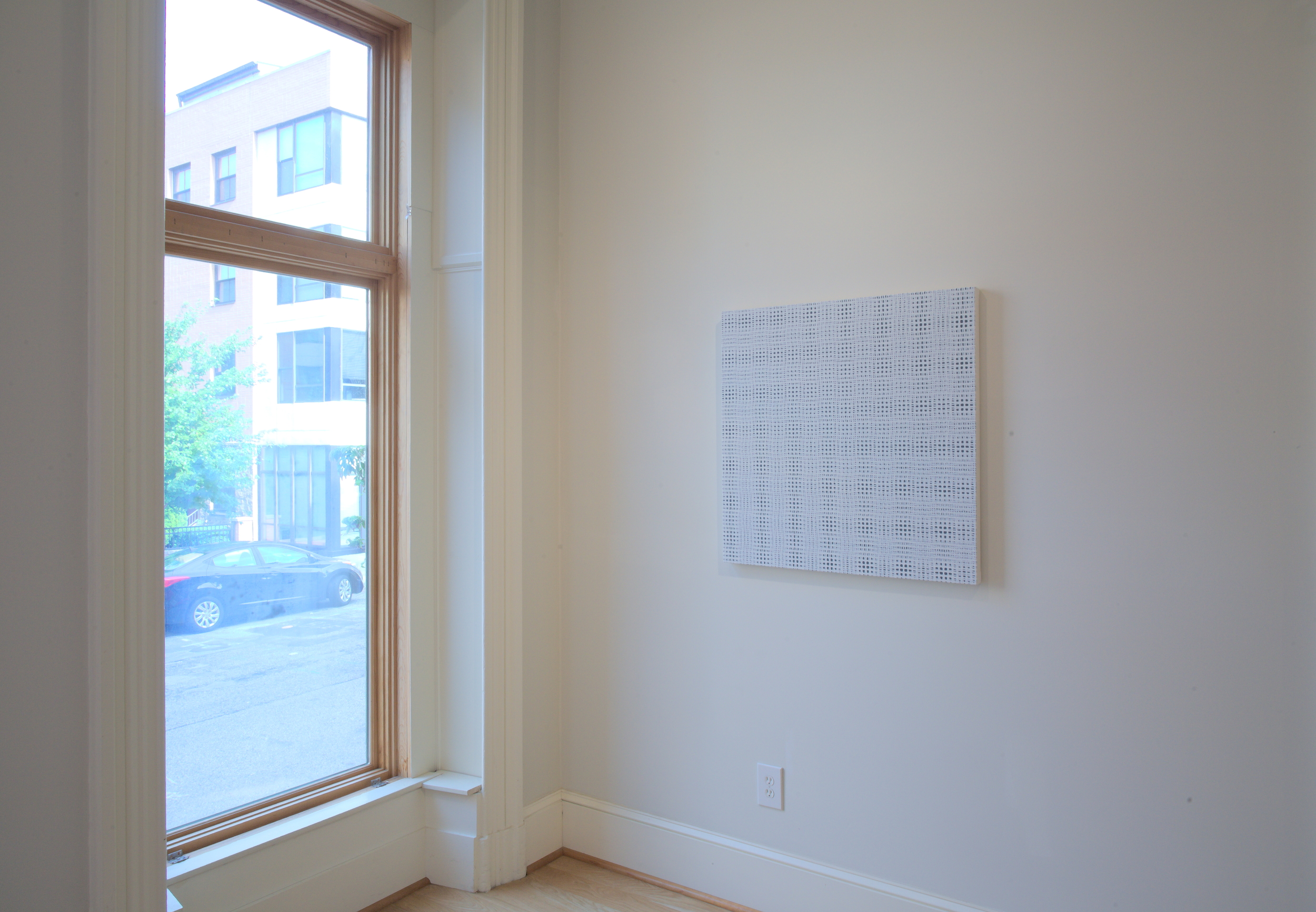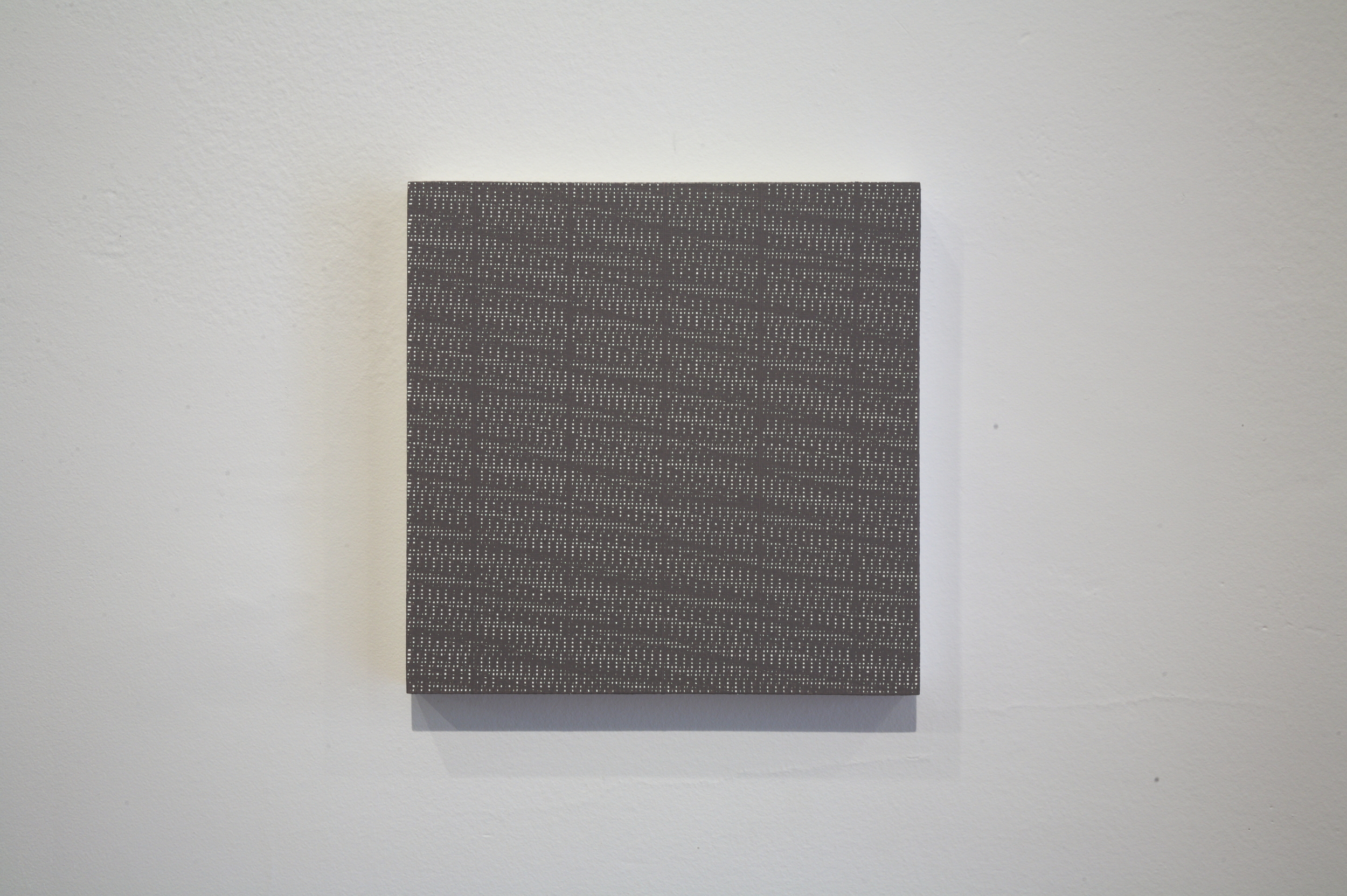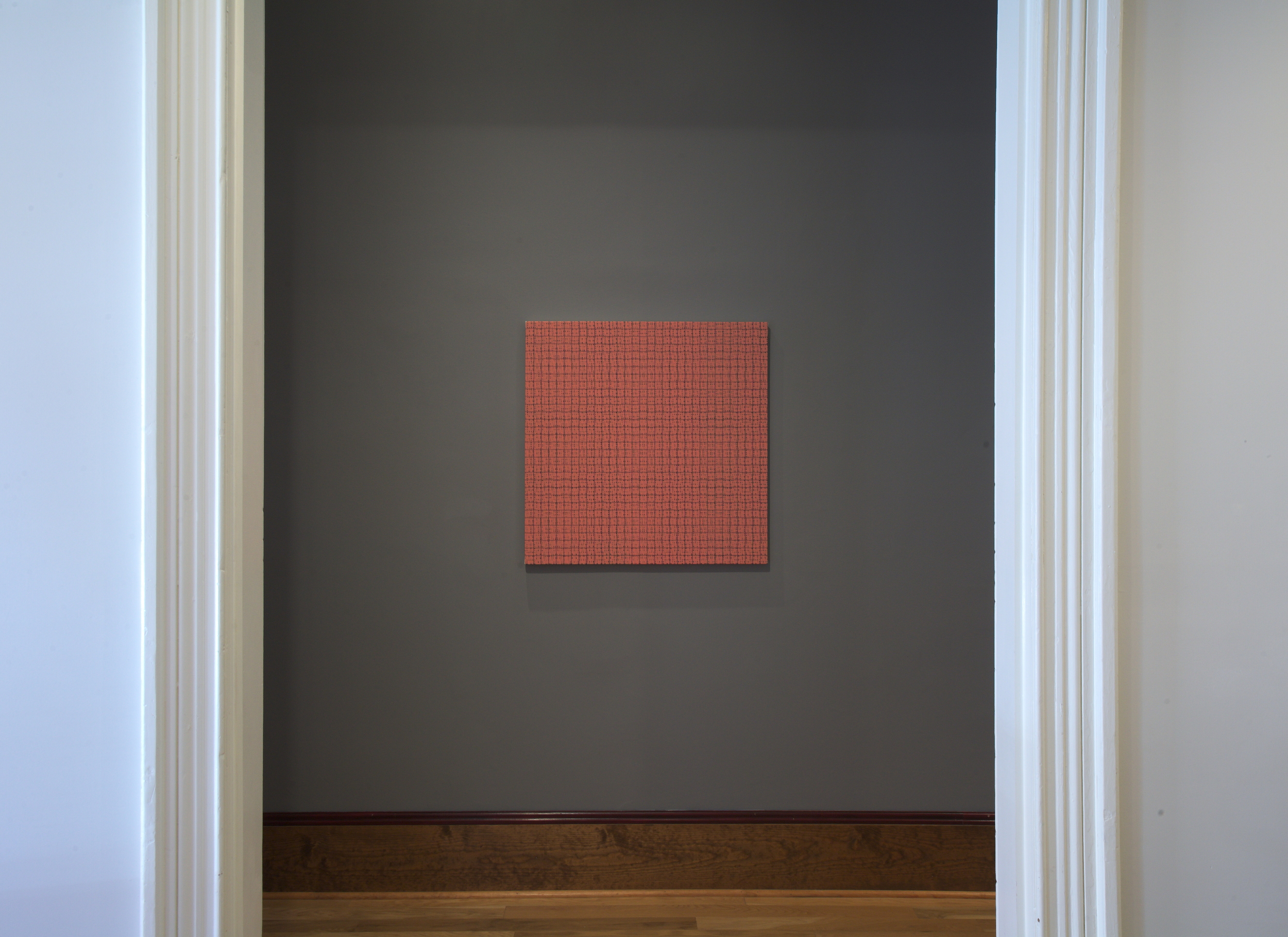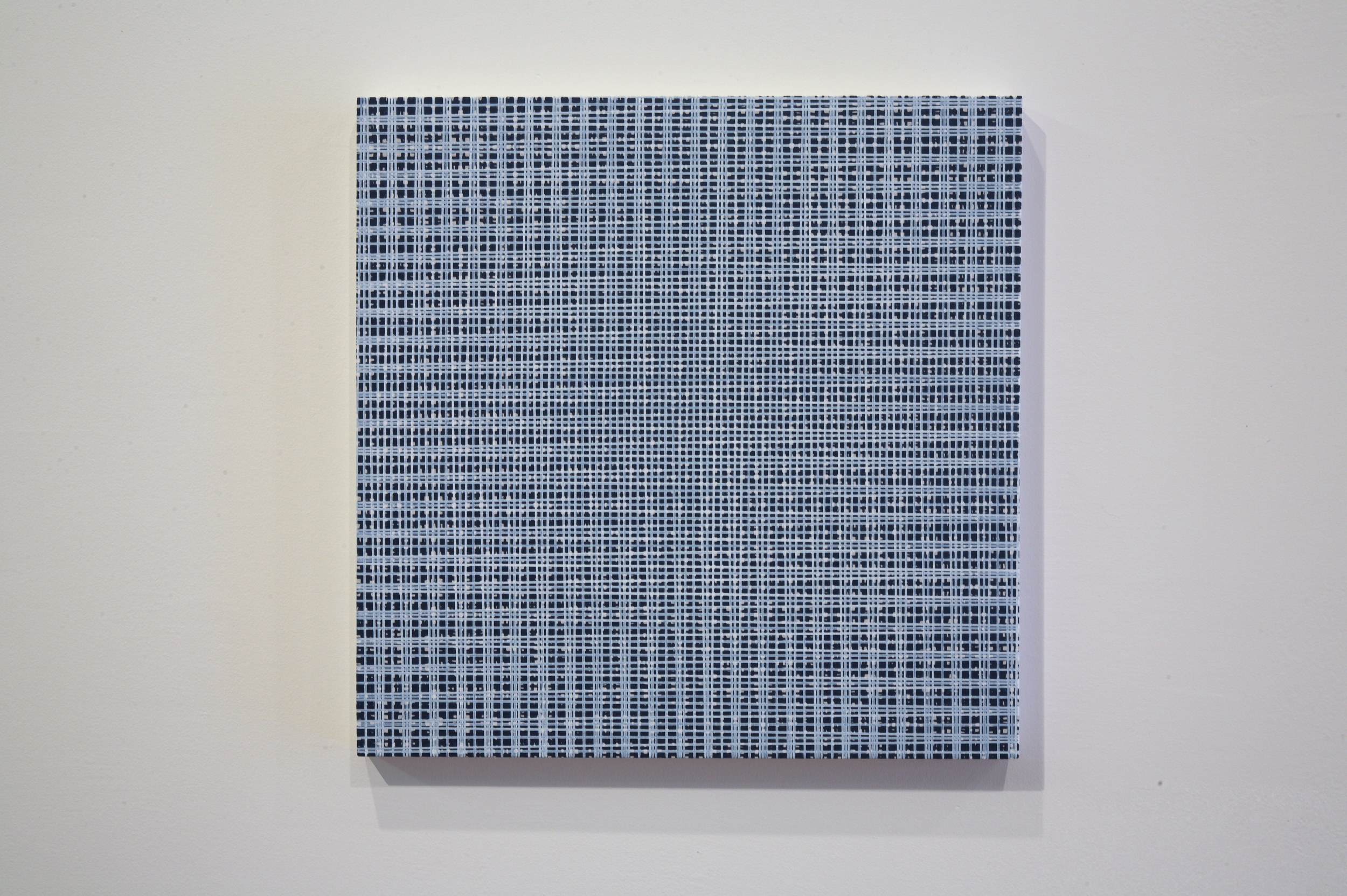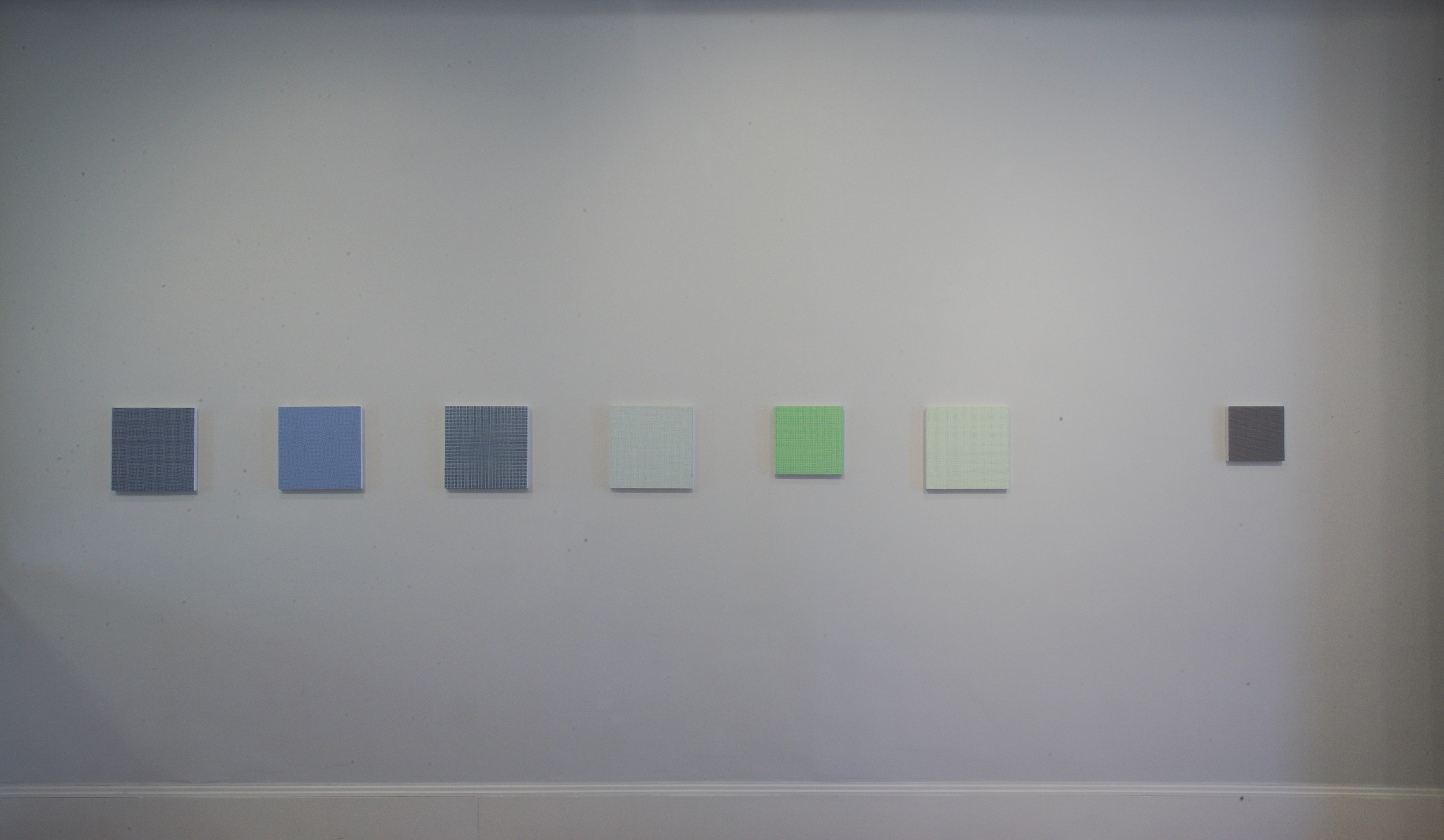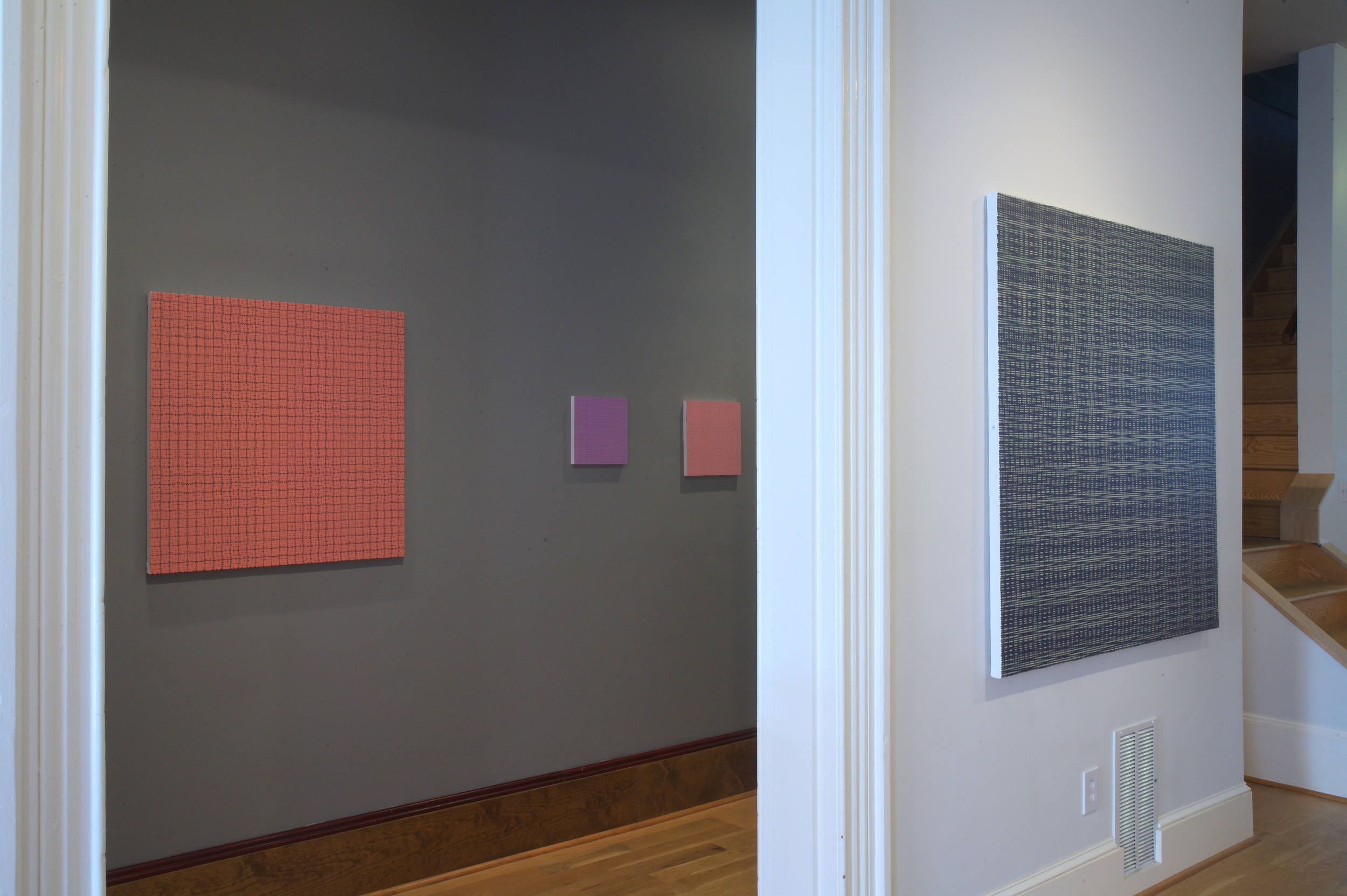Rob De Oude Solo Exhibition of New Works / Proximities
May 3 - June 21, 2014
Guest Spot at THE REINSTITUTE is proud to present Proximities, a solo exhibition of new works by Rob de Oude. Exhibition will open Saturday May 3, 2014 with the artist in attendance from 7pm to 10pm. The works will be on view through June 21, 2014.
Rob de Oude / Proximities
The functions of the healthy eye are predictable, reliable and efficient. Some postulate it to be the sense via which we gather upwards of 90% of our data about the world – meaning that its consistent performance is the principle criteria for our plans and decisions, from the most trivial right up matters of life and death. For all its nearly mechanical precision, however, the world presents certain phenomena that it simply cannot process without difficulty, disorientation and error. The moiré pattern is a prime example of such an exception – a notorious historical bugbear for textile designers, photographers, commercial printers, and computer programmers. When two or more patterns of similar constitution are laid over one another slightly off register, it creates a dilemma that the otherwise indefatigable eye can’t process. The result is a kind of displeasure that some characterize as pain. This particular exception to the otherwise routine rules of visual perception is the space in which Rob de Oude’s current work thrives.
Pain, however metaphorical, would seem to be a dicey place for an artist to begin. Unless one is either a sado-masochist or straining to make a socio-political statement, it can be safely assumed that aesthetic or intellectual pleasure is the natural objective for such a project. But pain, harnessed and edited by an eye and hand that’s astute, constitutes a kind of visual pleasure of the most unexpected and thrilling kind – tantamount to the type of pleasure one might experience on an especially tall roller-coaster, or at a genuinely scary horror film, or while eating an impossibly hot pepper. De Oude manages to turn pain into a kind of manic exuberance – his pictures are aesthetically and emotionally challenging, but at the same time infectious, urgent, and slyly witty.
The question, then, is how does de Oude affect this pain-as-pleasure conversion? The answer might be found in Ernst Gombrich’s The Sense of Order, in which the author suggests that the key to the enduring and cross-cultural appeal of pattern in art and design resides in the make-up of the mind itself. The human brain, Gombrich says, is built to solve problems – at root, the problems associated with survival. When the brain is at rest, this urge doesn’t subside, which provides a reliable explanation for the appeal of crossword puzzles and other concentration- driven activities that would upon first analysis seem at odds with the concept of leisure time. Pattern too easily understood, like a checkerboard, soon results in boredom. Chaos, while momentarily compelling, doesn’t present the active brain with a soluble problem, which in the end has the same result: boredom. Like the great arabesques of the best Islamic pattern designers, de Oude’s pictures present the viewer with something intuitively understandable as a repeating system, but the system refuses to give up its secret as to exactly what the repeating unit is, and where it begins and ends. The variety that de Oude routinely achieves in his fields means that even smaller scale pictures can be explored and revisited again and again, each time yielding new visual pleasures.
De Oude’s means are deceptively simple. Two, and occasionally three colors are arranged in sets of stripes of equal width and spacing. At least one set runs parallel to two of the picture’s framing edges, and subsequent groups are overlaid slightly off of the horizontal or vertical axis. The number of sets of stripes involves minimal planning – each one is a response to the previous group. De Oude proceeds in this way until he determines the picture is finished, which is a decision that is purely intuitive and aesthetically derived. Some paintings take shape in a relatively smaller number of passes, others are more densely layered and create surprising “artifacts” – the term used for the odd, unaccountable hiccups that begin to turn up in a heavily edited Photoshop file. When the color groupings have strong value contrast, the resulting grid crackles with aggressive energy (“pain”). Closer-valued color groupings result in a more atmospheric space – the effect is chromatically lush and painterly even though the execution is hard-edged.
The spatial organization created by these overlapping groups of stripes is unitary, but also filled with incident. The all-overness suggests Pollock, but the individual events that occur within de Oude’s matrix are quite different than Pollock’s loops and skeins. De Oude’s web organizes itself into smaller pattern groupings that momentarily repeat, but ultimately break down only to form new groups that set off the same false alarm. The sub-groups often seem to be melting in and out of one another, like a fade from one scene in a film to another. These phenomena are pointedly exemplified in the impressive and always shifting Proximities and Parameters from 2014: The overarching grid forms small clusters of squares (more accurately described as parallelograms) which organize themselves into four-unit groups, then nine, and occasionally into extended horizontal configurations, and, on the right side, into long verticals scrolls. The logic is relentless, and yet the picture is filled with surprise.
De Oude’s fellow Dutchman Willem de Kooning once commented that the true subject of abstract painting is space. I’ve always thought this quote was a simple and wonderful antidote to the idea that abstract painting was “painting-about-nothing,” and saved one from having to rhetorically draw the contentious and subtle distinction between content and subject matter. De Oude’s pictures are above all else a paean to pictorial space. His space evinces a certain tradition in painting – from Cezanne through Cubism to Pollock – but also embraces more than a century’s worth of technology, from early half-tone printing through to the ubiquitous screens of present-day computers and handheld devices. Most interestingly, the paintings report back about the instances when all of these technologies, old and new, are not functioning exactly as planned. This report isn’t offered as a dire critique, however – quite the opposite, it shows the extent to which visual pleasure can be found in the most unlikely places. De Oude finds a quirky kind of beauty in particular corners of the dominant landscape of the 21st have always admired and painted the landscape of their own eras. The principal and compelling difference in de Oude’s landscapes, however, is that they have essentially nothing to do with nature.
Paul Corio
March, 2014

